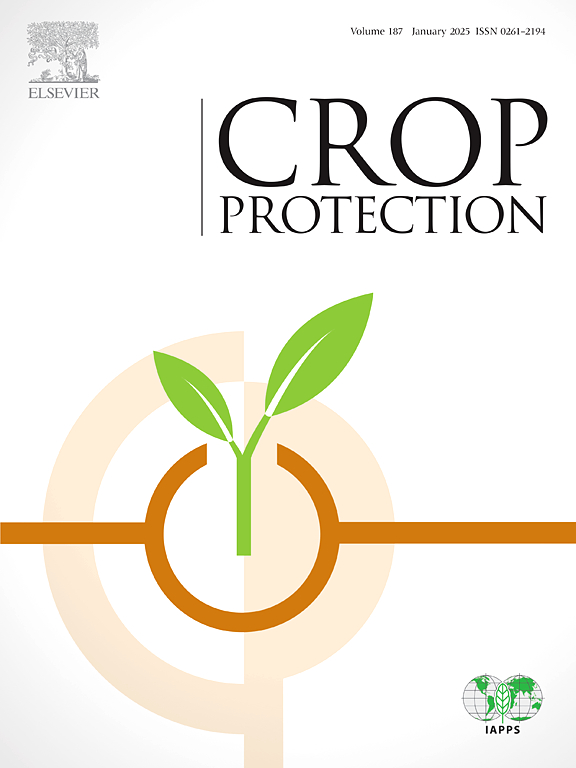Field efficacy of Trichoderma viride, Pseudomonas fluorescens, and consortia of microbial agents against tomato late blight, Phytophthora infestans (Mont.) de Bary in Indo-Gangetic Plain of Bihar
IF 2.5
2区 农林科学
Q1 AGRONOMY
引用次数: 0
Abstract
Late blight of tomato, caused by Phytophthora infestans, leads to substantial yield losses and significant reduction in crop production, if not managed effectively. Management of tomato late blight largely relies on chemical treatments, which poses a huge risk to the environment. Assuming that biological control is an alternative for late blight management, Trichoderma viride (Tv), Pseudomonas fluorescens (Pf), Arka Microbial Consortium (Bc1) and PUSA Sampoorn Microbial Consortium (Bc2) in different combinations were evaluated in present investigation. Among all tested combinations of biocontrol agents, Pf + Bc1 + Tv + Bc2 was the most effective with lowest disease incidence (7.41 and 8.85 %) followed by Tv + Bc2 (10.01 and 11.52 %) during 2022-23 and 2023–24, respectively. During both years, biocontrol agents lowered the disease index by 33–72 % as compared to the control. Furthermore, application of Pf + Bc1 + Tv + Bc2 resulted in a marked reduction in the area under disease progress curve (71.7 and 73.4 %) and enhanced the tomato yield (32.9 and 35.5 %) significantly over control. Findings from the present study indicate that the integrated application of T. viride, P. fluorescens and microbial Consortia provides a highly effective and cost-efficient biocontrol strategy for managing late blight in tomato crops. This approach combines multiple beneficial microorganisms that work synergistically to suppress the disease, making it a sustainable and economically viable option for tomato growers.
求助全文
约1分钟内获得全文
求助全文
来源期刊

Crop Protection
农林科学-农艺学
CiteScore
6.10
自引率
3.60%
发文量
200
审稿时长
29 days
期刊介绍:
The Editors of Crop Protection especially welcome papers describing an interdisciplinary approach showing how different control strategies can be integrated into practical pest management programs, covering high and low input agricultural systems worldwide. Crop Protection particularly emphasizes the practical aspects of control in the field and for protected crops, and includes work which may lead in the near future to more effective control. The journal does not duplicate the many existing excellent biological science journals, which deal mainly with the more fundamental aspects of plant pathology, applied zoology and weed science. Crop Protection covers all practical aspects of pest, disease and weed control, including the following topics:
-Abiotic damage-
Agronomic control methods-
Assessment of pest and disease damage-
Molecular methods for the detection and assessment of pests and diseases-
Biological control-
Biorational pesticides-
Control of animal pests of world crops-
Control of diseases of crop plants caused by microorganisms-
Control of weeds and integrated management-
Economic considerations-
Effects of plant growth regulators-
Environmental benefits of reduced pesticide use-
Environmental effects of pesticides-
Epidemiology of pests and diseases in relation to control-
GM Crops, and genetic engineering applications-
Importance and control of postharvest crop losses-
Integrated control-
Interrelationships and compatibility among different control strategies-
Invasive species as they relate to implications for crop protection-
Pesticide application methods-
Pest management-
Phytobiomes for pest and disease control-
Resistance management-
Sampling and monitoring schemes for diseases, nematodes, pests and weeds.
 求助内容:
求助内容: 应助结果提醒方式:
应助结果提醒方式:


